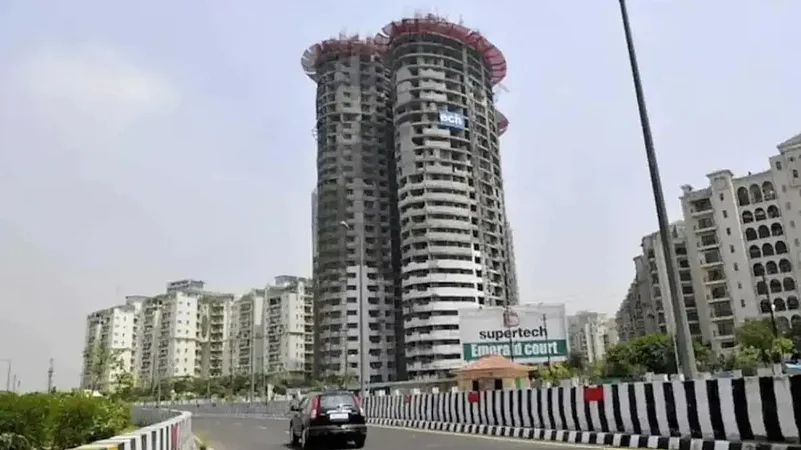The 31-storey twin towers of Supertech in Noida Sector 93 have been demolished after the Supreme Court last year refused to regularise the violations of building bylaws while giving approval for its construction.
The approximate construction cost of the two towers was estimated to be less than Rs 100 crore in 2014 when the Allahabad High Court passed the first order of demolition. Today, with the increase in the cost of construction, it is estimated to be over Rs 300 crore.
Has Supertech’s money gone down the drain? Real estate experts feel that despite the Supreme Court expressing deep anguish on the alleged collusion between the Builder and the Noida Authority and holding both of them responsible for this illegality, no action has been taken against them.
Advertisement
On the contrary, the money which has gone to waste belongs to the banks and the buyers who might not recover as the builder’s case landed in National Company Law Tribunal (NCLT) this year.
“On the face of it, it looks like the biggest loser is Supertech however since the builder is now in Corporate Insolvency Resolution Process (CIRP), the overall value of the assets would be assessed, and in turn, the money available for resolution will impact all the creditors such as banks and buyers,” advocate Venket Rao, founder, Intygrat Law Offices, and a well-known expert on insolvency laws, said.
Advertisement
Rao, who is also a legal advisor of the Real Estate Regulatory Authority (RERA) of Uttar Pradesh, says that the NCLT has already appointed an Internal Resolution Professional, Hitesh Goyal to head the company and look for a financial resolution, and there is a high probability that banks might not be able to fully recover their loans and credit from the builder.
Out of over 600 buyers who had bought flats in these two towers, all of them, except 59, have either got a refund or swapped flats for other projects of the builder. The Supreme Court has promised that it would get the homebuyers’ money refunded from the builder and it has asked the IRP Goyal to deposit Rs 1 crore in the apex court’s registry by September 30, 2022.
Ashish Mohan Gupta, the president of Jaypee Infratech Limited (JIL) Real Estate Allottees Welfare Society, says that these 59 buyers might get their full refund with the interest but once the company goes into insolvency, the larger consequence is that only creditors, be it homebuyer of the banks, suffer.
“Look, what has happened in the JIL's case? For the past five years, the resolution process has been going on and buyers are paying their EMIs and rent. Do you think these buyers can ever recover their losses? It will never happen and buyers and banks will end up paying the cost of illegality committed by the builder and the Authority,” Gupta said.
Advertisement
Alok Kumar, an advocate and a veteran of insolvency matters, agrees with Rao and Gupta and said that so far as money is concerned, the builder doesn’t lose anything.
“Yes, I agree that demolition means pouring buyers' and banks' money down the drain and not the builder's,” Kumar said.
A section of experts also suggests that instead of demolishing the construction, it should have been taken away from the builder and used for government purposes to maximize the utility of financial resources already used in the construction process. It would have minimized the loss of public money.
“It would have been better if an alternate resolution would have been found to use such a huge building for other useful purposes, by acquiring it by the government, which would have been a better way to save the national resources,” Advocate J.K. Mittal, the co-chairman of the National Council of Indirect Taxes, Assocham, suggested.















 Just one email a week
Just one email a week